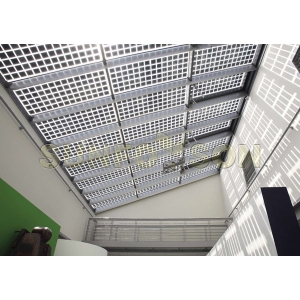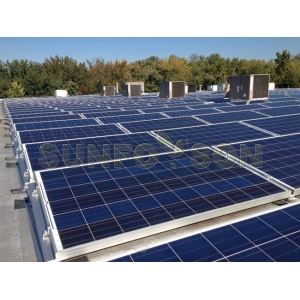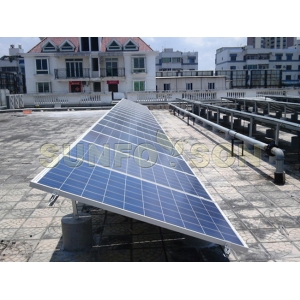The Seoul Municipal Government is pursuing its plans to become a leading solar city, with the
latest development a "Solar Map" of the city, which will be released next month. The map will
show areas suitable for photovoltaics and the savings rooftop installations will deliver.
Seoul is set to launch a solar map of the city. LG Solar Last year the Seoul Municipal Government (SMG) released its plans to transform the city into a "Sunlight City," by adding 320 MWof photovoltaic capacity by the end of 2014. The goal is a part of the South Korean capital’s "One Less Nuclear Power Plant" (ULNPP) program, which aims to increase the city’s energy independence through a range of measures including the promotion of photovoltaics.
The programs are in part a response to public opposition to a reliance on nuclear energy, in the wake of the Fukushima nuclear disaster in Japan.
As a part of the ULNPP program, 100 MW of photovoltaics is planned to be installed across
public school buildings in the city. The photovoltaic installations will then feature on the school
syllabus, helping to increase salience about solar energy.
Another way to raise public perception as to the potential of photovoltaics is through the
production of the Solar Map, which is set to be released next month.
Korea’s LG Solar reports to pv magazine that the national government is also active in fostering
photovoltaic capacity growth, through its Renewable Portfolio Standards (RPS) program. The
program came into effect last year and replaced the now-defunct FIT. The goal is for 1.2 GW of photovoltaic capacity to be added by 2015.
LG Solar’s Won Mo told pv magazine that the RPS alone won’t be sufficient as a loan force
driving photovoltaics. "The RPS scheme cannot be the only driving force for expanding solar
market and relevant organizations and companies are considering other options such as the
restoration of FIT scheme," said Won Mo.LG Solar’s itself is planning to ship 40% of 2013 production to the domestic Korean market. One factor behind this, said Won Mo, is a preference in the Korean market for domestically manufactured modules. "Korean buyers prefer domestic brands since they care for durability and reliability but at the same time they want the competitively priced module also." As installation sizes increase, Won Mo notes, this becomes less of a factor. "The utility sector has a tendency towards competitive price, domestic or foreign, since profitability, or IRR is at the top of their list."
The forthcoming March edition of pv magazine contains a feature article on the Korean
photovoltaic market.















